Companies build factories to mass-produce goods. They utilize them until they reach their maximum capacity, and then they build newer and bigger facilities to keep up with increasing demand. Or they cut down on the production capacity if they can’t stay ahead of their competitors. In either case the old structures are usually turned into warehouses, left abandoned, or sold altogether – the latter usually results in their demolition to make way for new development, and the cycle continues.
Sometimes unused factories, or any old buildings for that matter, are given a second chance and brought back to life by those who see their potential to attract people who would otherwise stay clear from derelict premises. However, when this transformation is done with commercial purposes in mind, i.e. reaping huge profits, what usually follows is the opening of crowd-pleasing and often tacky venues – trick eye ‘museums’ and brightly-colored spots are the norm now, thanks to the drive Instagram has created.
Once in a while, however, there are a few revitalization projects carried out in a sensible way that they not only breathe life back into the decrepit places, but they also enrich the communities to which they belong through cultural offerings, becoming a space for the locals to express their artistic calling, and housing independent retailers aimed at boosting the local economy. In other words, they put the community’s interest above anything else. In Tsuen Wan, a district in the western side of Hong Kong’s New Territories, a fine example of one such project has recently opened its doors to the public.
In 1954, Chinese businessman Chen Di-hwa, who fled to Hong Kong after the Communist Party came to power in the mainland, established Nan Fung Cotton Mills at a time when the textile industry was the largest employer in Hong Kong, accounting for around 30% of the total workforce. In the following years Nan Fung constructed more mills to keep up with the growing demand, and by 1970 (the year when 43% of the manufacturing workforce was employed in the textile industry) it had six mills in operation.
Then came the 1980s, when Hong Kong’s economy diversified and grew rapidly to become one of Asia’s Four Tigers. This contributed to the demise of the cotton industry in the former British colony, and subsequently the demolition of Nan Fung’s Mills 1, 2 and 3. The company also gradually shifted its core business from textile manufacturing to property development, and today Nan Fung Group is Hong Kong’s largest privately-held developer. Its textile factories shut down completely in 2008 and the remaining mills (Mill 4, 5 and 6) were turned into warehouses.
Vanessa Cheung, the granddaughter of Chen, and a landscape architect by training, joined the family business in 2013. Two years later Mill6 Foundation was established as a non-profit arts and cultural organization whose primary mission is to manage and operate Centre for Heritage Arts & Textile (CHAT), the first of its kind in Hong Kong. Later Cheung came up with the idea of utilizing the company’s old warehouses as a permanent venue for affairs organized by the foundation, including exhibitions and community events.
Work began in 2016 at Mills 4 to 6 with a sight many Hong Kongers are familiar with: construction mesh and scaffolding. However, it wasn’t done to demolish the structures. Instead, a major transformation was underway to turn the three old warehouses into a hub for creativity and inspiration. For two years construction workers carefully restored much of the original structure, reinforced some columns with steel, built glass bridges to connect the separate mills, and hollowed out a three-story space to create a large top-lit atrium which would become a centerpiece of the entire compound, which would soon be named The Mills.
Toward the end of 2018 The Mills was finally unveiled to the public and I happened to be in town just weeks after its official opening. From the outside, the entire compound looked anything but old. It wasn’t overwhelmingly imposing – unlike many other modern buildings that tower over their immediate surroundings – but it was visually inviting enough for people to go inside. Entering The Hall, dubbed the heart of The Mills with a beautifully-made Christmas “tree” hanging from the large skylight above, I marveled at the warm ambiance which is not usually associated with industrial buildings. It could have been because of the lights from the independent shops at the ground and first floors, each filled with unique as well as thought-provoking items, or the afternoon light of the unseasonably hot (and humid) winter’s day that entered this open space.
The entire compound of The Mills comprises three main sections: CHAT which occupies the second floor of Mill 6 and the first floor of Mill 4; Fabrica, a business incubator and springboard for startups located at the fourth, fifth and sixth floors of Mill 5; and Shopfloor, a space for brands with special stories and local significance. Speaking of the latter, not only is this retail space filled with beautiful small shops – an antithesis to the monotonous selection most Hong Kong malls offer – but it’s also home to some interesting businesses that employ unusual production methods.
On the ground floor, alt: introduces the concept of Garment-to-Garment (G2G) recycling, an alternative to incineration and disposal which might hold the key to a more sustainable clothing industry in the future. One only needs to bring his/her old garments to the store. The staff will then estimate how much of a discount the person will get to buy recycled clothes at the shop which have been processed from old garments other customers have brought in before.
Meanwhile, Shabibi Sheep Workshop on the first floor challenges people’s perceptions of concrete as an unappealing and rough material by making art pieces, homeware products, and even jewelry from it. No additives or other substances were added during the process, allowing people to touch and feel concrete like they’ve never seen before. The idea is clearly “out of the box”, and the shop hopes to inspire people to think in new ways.
The Deck, the smaller of two open-air rooftop terraces at The Mills, is where organic vegetables are grown as a part of the increasingly popular farm-to-table concept which emphasizes the importance of sustainability and local produce. On the other hand, The Park on top of Mill 6 provides visitors with a relaxing place to talk with their friends and families, to people-watch, or just to read. At the far end of it a 24.3-m long art installation called Wavy Weaving Wall consisting of small panels made from materials that mimic the movement of fabric, evoking the history of Hong Kong’s textile industry.
All over The Mills pieces of the past are purposefully retained in their original condition as a time machine to enhance the visitor experience. From the original staircase of Mill 4, sand buckets to put out a fire, metal gates that have been turned into the backdrops for information counters within the compound, and timber doors which have been repurposed as benches and signage, preservation has clearly been conducted here in a sensible and tasteful manner.
Just before heading back into the city center, we walked down Pak Tin Par Lane, a passageway between Mill 5 and 6 that is now adorned with colorful murals that pay homage to Nan Fung’s past as a textile manufacturer. As I caught a glimpse of The Hall from the outside, I couldn’t help but think of the message this place tries to convey: reinvention and a change of lifestyles, both of which are keys to creating and sustaining a thriving society. What began as a visit to a relatively unknown (and slightly out of the way) part of Hong Kong ended up as one of the most satisfying and inspiring urban explorations I’ve ever done to date.


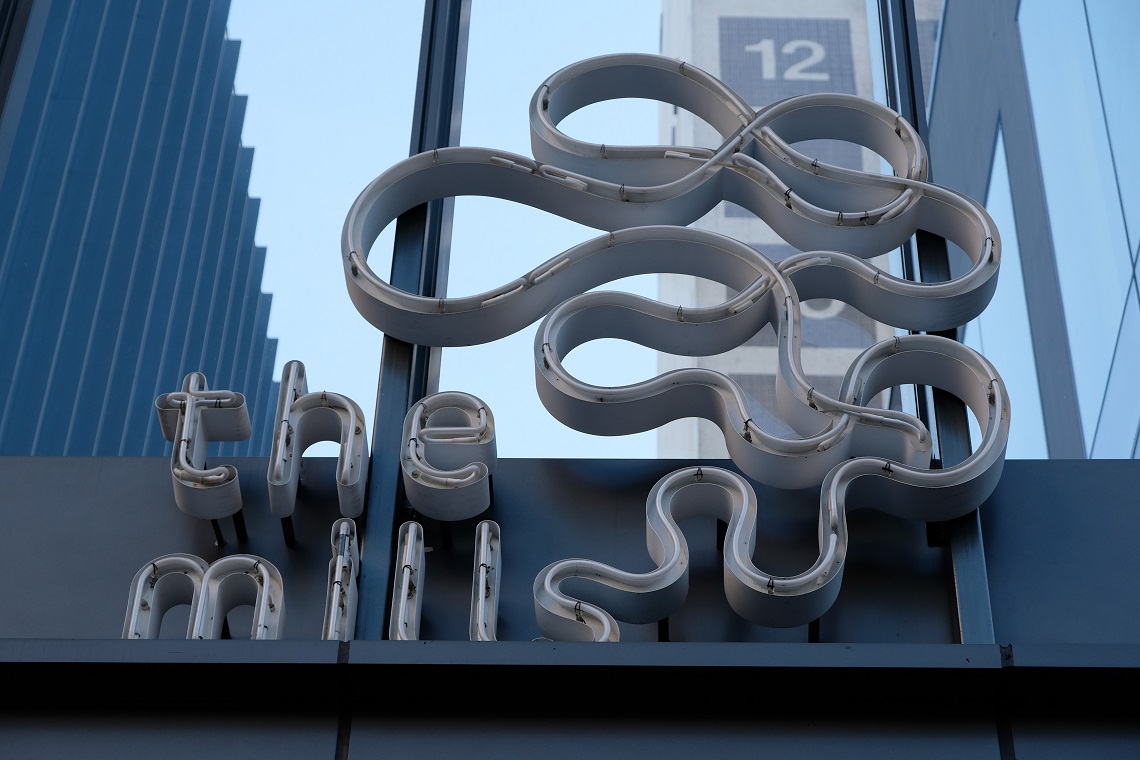

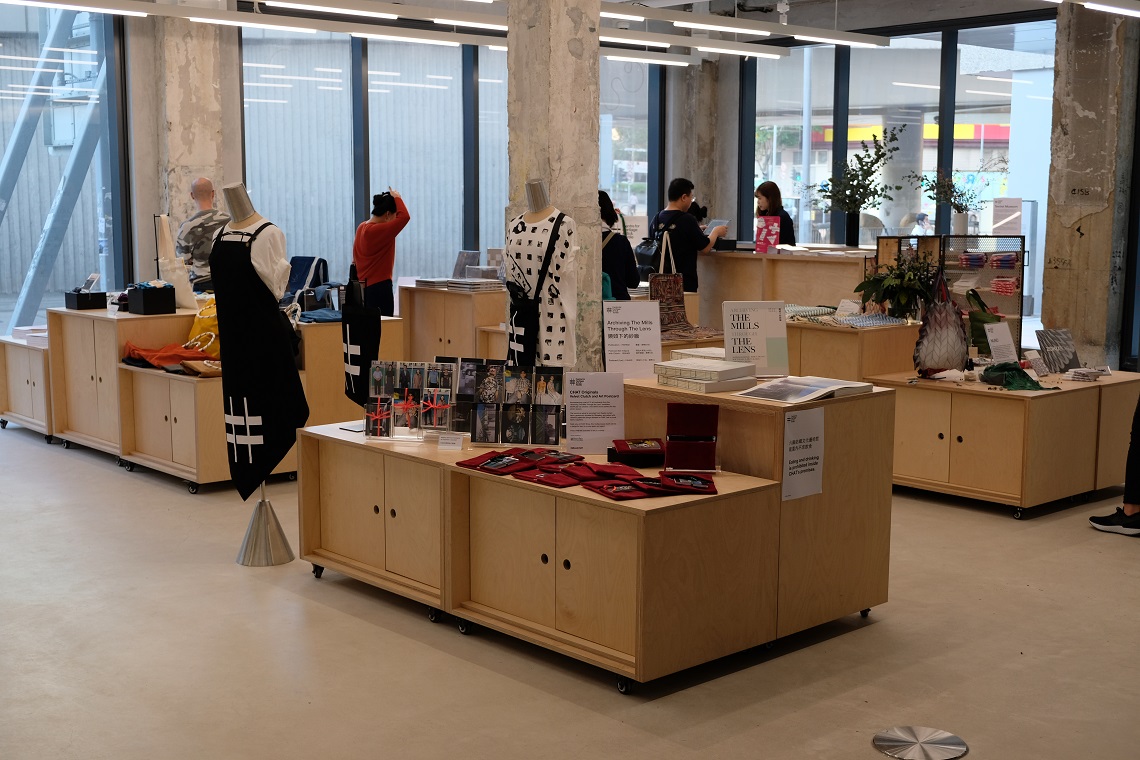
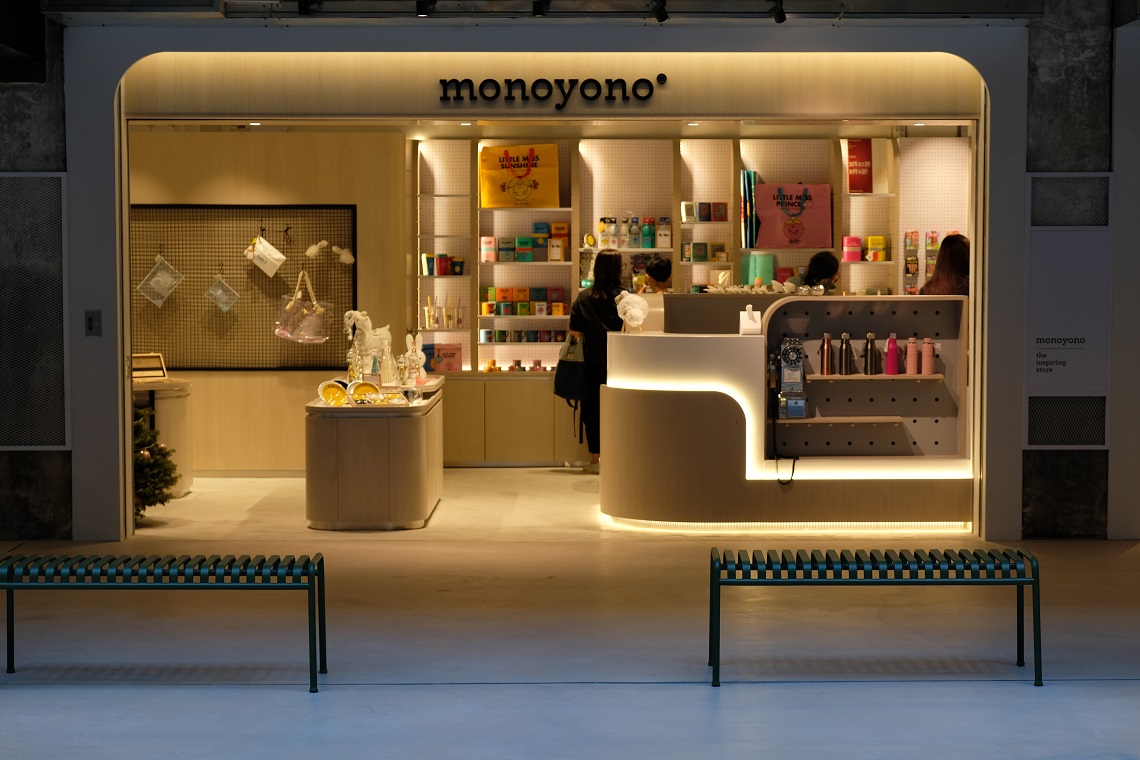





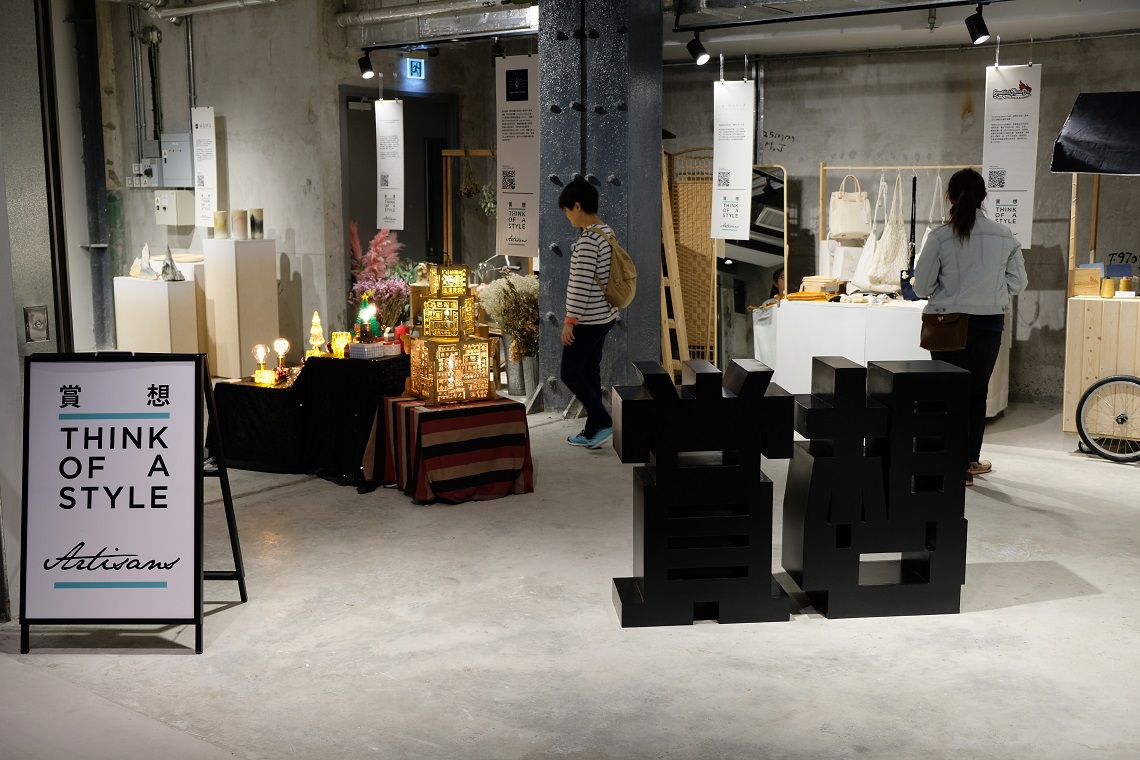














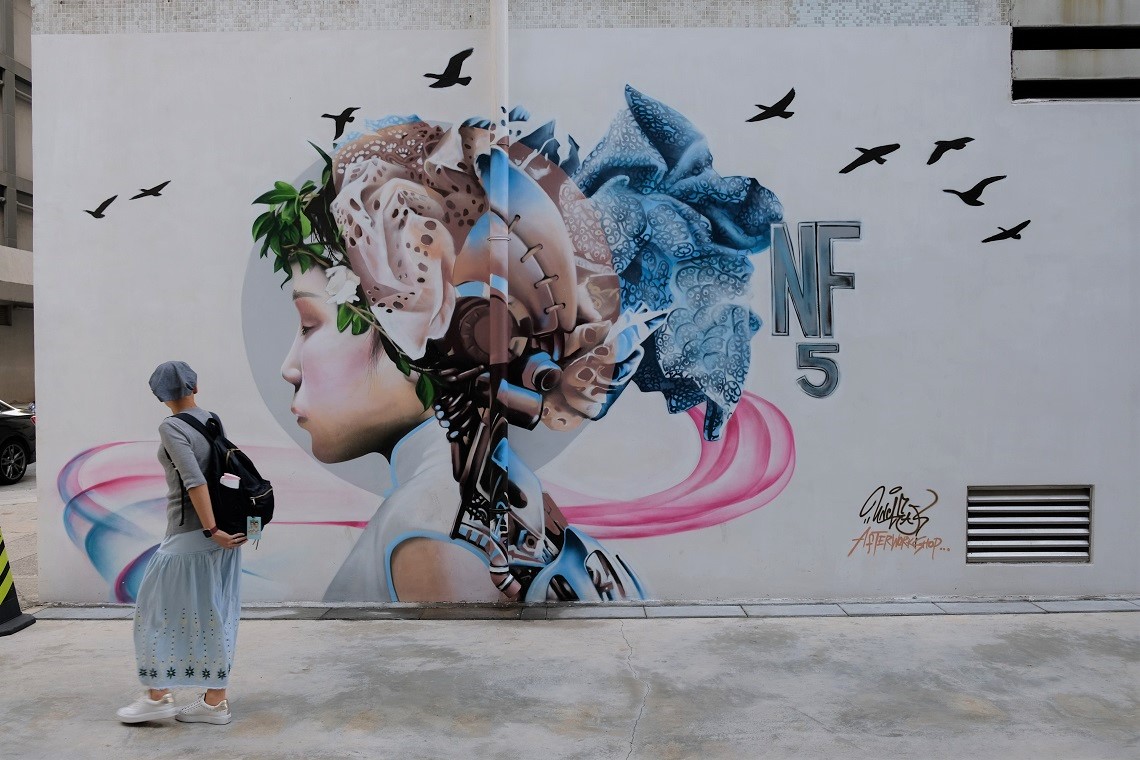

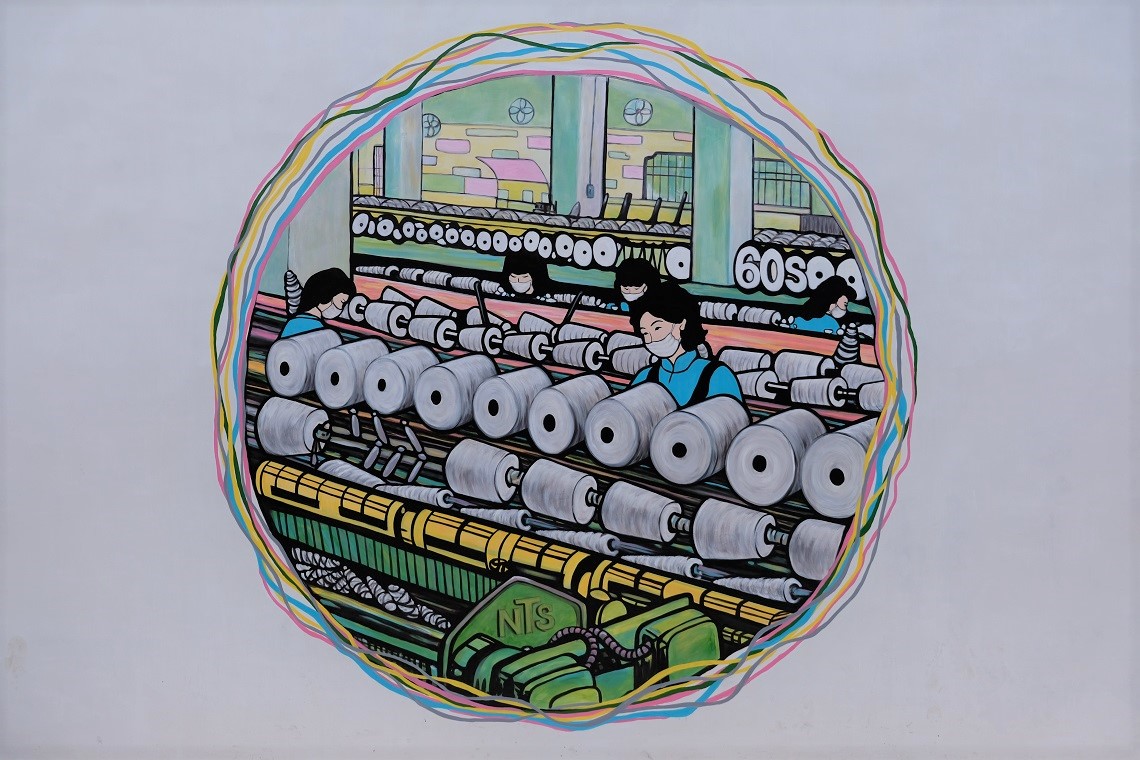

Really nice to see some of the original pieces slotted into the new
LikeLike
That was also one of the things that caught my attention the most. It’s an ingenious way to preserve a relic from the past without erasing much of the original appearance.
LikeLiked by 1 person
Interesting looking place. Your photographs show less crowds than most places in HK, probably because you were there so soon after it opened.
LikeLike
Probably. But to be fair this place is located at the very end of Tsuen Wan line (the red line), so that might be a hindrance for some people who prefer to go somewhere closer to the city.
LikeLiked by 1 person
I visited The Mills last weekend. Crowds were significantly bigger than on your pictures. It’s still work in progress, with many spaces yet unoccupied. The Mills is one of several recent developments in the similar vein opened recently, most prominently Tai Kwun, a former prison. It’s a cool way to repurpose older buildings. The notorious Central Market in the very centre of the city is also, finally, undergoing a renovation, after decades of abandonment.
LikeLiked by 1 person
Actually that day in the morning we went to Tai Kwun first, then The Mills in the afternoon. By the end of the day I felt so inspired and excited, and it made me wonder if there are places like these two in Jakarta because this city has so much talent and ‘energy’. When it comes to arts and culture Hong Kong is a really interesting place to be right now, and I can’t wait to visit West Kowloon Cultural District after it opens its doors to the public sometime in the future. It will be interesting to see the restored Central Market as well.
LikeLike
The Mills is such an interesting concept, and love how you gave us an in-depth overview of it. From your photos I agree with you, it doesn’t look old at all but instead modern minimalistic, which seems to be the trend these days. It is interesting to read different floors cater to different revitalisation areas. Startups seem to be very common these days, and there are different startups to empower our lives and empower each other as well. I do wonder how much it takes to sustain The Mills cost-wise of starting up, and now the running of it and into the long run. I guess with visitors like you and many who are keen on living modern and taking care of the world, this initiative will probably be around for a while.
LikeLiked by 1 person
It’s the kind of place I like to hang out with friends, or just by myself. In fact, after exploring some of its sections I decided to sit in The Hall for quite some time just to enjoy the beautiful building and be in the moment. Startups really are disrupting the way we do business and almost everything else, in a good way for they force traditional companies to think of innovative ways to stay relevant. I was wondering about the cost too, but Nan Fung seems to be doing well (hopefully) and I think in the foreseeable future The Mills will remain true to its raison d’être.
LikeLiked by 1 person
A good question would be: does this place have staying power? It’s new and cool now, but will people go back there? The architecture is interesting, but the place is far. I went there to check it out, not to shop, and the coffee I had in one of the cafes was awful, so that left a bad impression. I don’t think I will go back anytime soon. Will the people who live nearby make it commercially viable?
LikeLiked by 1 person
My hope is that the people behind The Mills won’t resort to superficial ways many places targeting millennials do to attract them to come, because not only it is not sustainable, but also no one will learn anything from it.
LikeLike
That really i a good question, Piotr. You can have something that is new, cool and flashy, but it’s worth asking will it be practical in the long run. I’d give it to these place for bringing new ideas to the fore, but I’d also say you can probably get good and coffee more affordable elsewhere.
LikeLiked by 1 person
This is amazing. I learnt something new today.
LikeLike
Thanks for reading, Vivek. The Mills is indeed filled with good vibes and inspirations. Glad you enjoyed this post.
LikeLike
What a wonderful place for ALL they have created! I hope it continues to thrive. I sent a link to this to a friend in Alaska who is planning another trip to Asia. Thanks!
LikeLiked by 1 person
I certainly hope so. Much appreciated, Marilyn. Wish your friend a great time in Asia!
LikeLike
This is such an extraordinary initiative. I was fascinated reading about all the cool things The Mills houses. I’m especially intrigued by the G2G recycling concept. It struck a chord as I’ve recently done a closet “clean-out” and am at a loss of what to do with really old, worn out garments that are unfit to give away. Maybe Vancouver has something like this…time to google!
LikeLiked by 1 person
It really is, isn’t it? I hope there will be more places like this sprouting up elsewhere in the future. Were you inspired by Marie Kondo to do the clean-out? I know I should do the same with my apartment — in those boxes there must be items I no longer need and will never need.
LikeLiked by 1 person
No, I’m trying to make good on a new year’s resolution from 2018 that I never completed…going through every room in the house, including the garage (ugh!). Stick to an apartment. The bigger the house the more needless stuff that accumulates!
LikeLiked by 1 person
Exactly my thought. Having such a limited space always makes me think twice before buying something. Most of the times I manage to buy things I need, not want.
LikeLiked by 1 person
I’m such a sucker for industrial archaeology that I’d be flying there just for the Mills! Thanks for taking us there, although vicariously, Bama.
There are quite a lot such opportunities in my hometown, with wool mills and not cotton, but being it not quite Hong Kong, and being my fellow countrymen rather stupid, very little (if anything) is being done…
LikeLiked by 1 person
I really like the fact that despite the modern look, if one pays attention to the columns, the staircases, and many other corners of The Mills, clearly this compound had a rough past, and it’s not being hidden from us the visitors. Instead, the “imperfect” appearance adds to the beauty of this place.
Some places embrace this kind of progressive and innovative ideas rather slowly, but maybe you can help spread the word to your fellow countrymen? 🙂
LikeLiked by 1 person
Interesting! Will loved to visit The Mills if I have a chance to visit HK – the architecture, little shops & cafe, murals, how beautiful that place is. I also loved how they keep the part of history in this new artsy space. Old but also new at the same time.
LikeLiked by 1 person
If you have ample time in the city, and you love places that are unique and inspiring, you should make it to The Mills. Hopefully by the time you go it will still retain its charm that really caught me by surprise, in a good way.
LikeLiked by 1 person
I think it’s super important to have forms of production operations in urban centres, close to their place on consumption. Although the operations at The Mills seem small scale, it’s a great start having things like farm-to-table agriculture in somewhere as dense as Hong Kong. And the G2G looks excellent–what a great way to save water and curb waste, and what better location too?! And of course the respect shown by the architects towards the original building, as well as the new art installations, provide great incentive to visit and make use of the tings going on within.
LikeLiked by 1 person
I like the idea of farm-to-table agriculture since it reduces the needs for fossil fuel and storage. Overall, I think the most important thing people can learn from places like The Mills is that there are actually ways to remain trendy and fashionable without having to sacrifice the environment.
LikeLike
What a great story, Bama. We need to support these recycle/reuse projects as much as we can. I’m sure many are of the commercial/tacky sort, but in my view, even those are better than starting over and throwing all those construction materials into landfills. When you can renovate AND meet community-based needs, all the better!
LikeLiked by 1 person
Exactly! At the moment having a perfect version of The Mills that is appealing to the public is probably a bit unrealistic. But at least what this new venue for creativity offers are ideas and inspirations that living a modern lifestyle doesn’t necessarily mean putting the earth’s well-being at further risk.
LikeLiked by 1 person
I still feel as through your an amazing photographer rather there were many people or not. The pictures are great. The angle, lighting, position all of it.
LikeLiked by 1 person
Thanks for your kind words, Christine. Glad you enjoyed this post and the photos.
LikeLike
I wish that you could publish this post a bit earlier, Bama 😦 Just came back from Hong Kong a few days ago. It looks like I have missed a really cool place. For Hong Kong, I guess you have to look closely (perhaps look inside a building) to discover its charm because from outside, Hong Kong is just a collection of skyscrapers, malls and old buildings. If you add the fog (or probably smog) and the crowd, the city looks no appealing at all 🙂
LikeLike
Don’t worry, The Mills will still be there the next time you go to Hong Kong — and maybe by then West Kowloon Cultural Centre will have opened its doors to the public as well. So on your recent trip the city was covered in fog? That sounds like my first time in Hong Kong — I went to the Big Buddha and couldn’t see anything.
LikeLiked by 1 person
It was exactly as you said! The Big Buddha was swallowed by the fog and riding the cable car was like floating through the cloud 🙂
LikeLiked by 1 person
thank you for information
LikeLike
Terima kasih sudah mampir di blog saya. 🙂
LikeLike
The gentrification of mills! We have old mill areas in Mumbai which are slowly being converted into residential/commercial areas as well.
LikeLiked by 1 person
Ahh, so it is happening in many places across the globe, which is very encouraging. I’d love to see one in the city where I live — or maybe there has already been one.
LikeLike
The Nan Fung Group did such a superb job in breathing new life into these old 1950s/60s cotton mills – I especially appreciate how they kept so many of the original details and the walls of peeling paint. There’s something wonderful about a building that wears its age – its patina – with pride. The choice of tenants is inspired too, and now that we’re no longer in Hong Kong, I wonder whether we should have picked up a few concrete souvenirs from Shabibi Sheep Workshop.
LikeLiked by 1 person
The fact that they kept parts of the original structure is one of the things that makes The Mills such a cool place — a great alternative to completely modern buildings that is the norm in Hong Kong. I actually wish I spent more time at that shop, and maybe got something for myself as a memento. Well, maybe next time!
LikeLiked by 1 person
Bama, this is a fascinating post. Love the way you started with broad context about the generic fate of old industrial buildings and their cycle of death and reincarnation, and then took us through the cotton mill business story leading up to the revitalisation of Mill #6. Great journey!
Love what the grand daughter was able to achieve by taking a decrepit family asset and gifting it to the community as destination for creative endeavours. Next time we are in Hong Kong we will no doubt go and visit this place, so thank you so much for this introduction to something super cool.
Ben
LikeLiked by 1 person
Thanks Ben. I think the main message The Mills tries to convey is that old structures have values and demolition is not necessarily the best thing to do to them. The more benefits it can bring to the community, the more people realize that maybe what they need is not another mall, but a place that can spark their creativity.
LikeLike
Mas Bama… wah terima kasih atas post ini, lagi-lagi saya bacanya pas makan siang, jadi berasa santai dan terhibur sekaligus berada invited kesana bwahahaha… kalo ke HK akan kukejaaar, itu tempat asiiik banget sih, Dan ngebayangin di jakarta ada tempat seperti itu… terutama yang G-to-G itu… sekalian bongkar lemari wkwkwk… btw, berapa lama minimal waktu yang diperlukan untuk explore the mills ini?
LikeLiked by 1 person
Keputusan yang tepat untuk membaca post ini pas makan siang, hehe.. 🙂 Saya belum pernah ke tempat yang vibe-nya kayak The Mills ini sih, jadi bener-bener berkesan. Saya di sana sekitar satu jam sih mbak. Tapi sebenernya mau dua jam juga saya sih betah-betah aja karena suasananya enak.
LikeLiked by 1 person